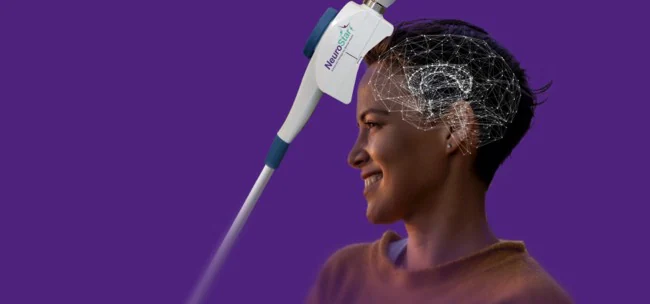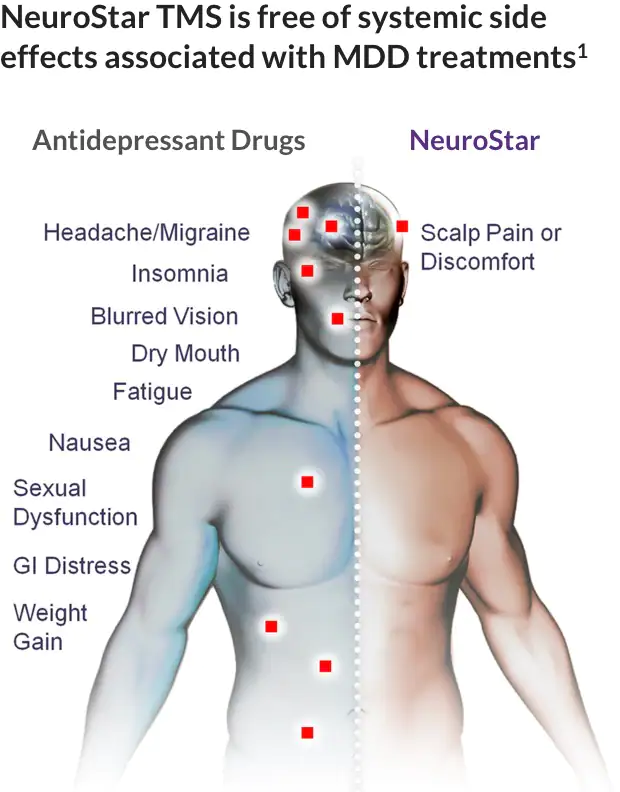
Speak to a NeuroStar doctor near you here.
What Is NeuroStar TMS?
NeuroStar Advanced Therapy is a non-drug, non-invasive, FDA-cleared therapy that treats depression at the source. During a NeuroStar treatment session, a magnet similar in strength to that used in a magnetic resonance imaging (MRI) machine is used to stimulate nerve cells in the area of the brain thought to control mood. NeuroStar activates the natural function of the brain’s neurotransmitters using transcranial magnetic stimulation (TMS). NeuroStar is not ECT (electroconvulsive therapy). Because NeuroStar is a non-drug treatment, people don’t experience side effects like those associated with antidepressant medications.1 NeuroStar treatments are performed in your doctor’s office, and NeuroStar is widely covered by insurance. More than 3 million treatments have been performed with NeuroStar, further proving its safety and efficacy record.
1. Janicak PG, et al (2008)

More than 3 million treatments have been performed with NeuroStar, further proving its safety and efficacy record.
1. Janicak PG, et al (2008)
Watch how NeuroStar TMS works:
Is long-term remission possible with NeuroStar TMS?
For people with Major Depressive Disorder (MDD), a large study of antidepressants showed that long-term remission becomes less likely with each prescription medication treatment attempt. As antidepressant medication increases, so can side effects and the potential for treatment failure.1,2,3,4 Remission from depression is possible with NeuroStar. Learn more about why patients ask for NeuroStar by name.

Feel better, stay better with NeuroStar TMS
It’s time to rethink depression. NeuroStar treats depression differently especially for people who have not benefited from antidepressant medication. Learn more about NeuroStar patients’ journeys here or use our locator to find a NeuroStar doctor near you.
References
- Trivedi MH, et al. (2006). Evaluation of Outcomes with Citalopram for Depression Using Measurement-Based Care in STAR*D Implications for Clinical Practice. Am J Psychiatry, 163(1):28-40
- Rush AJ, et. al. (2006) Acute and longer-term outcomes in depressed outpatients requiring one or several treatment steps: a STAR*D report. Am J Psychiatry, 163(11):1905-1917.
- Fava M, et. al. (2006) A Comparison of Mirtazapine and Nortriptyline Following Two Consecutive Failed Medication Treatments for Depressed Outpatients: A Star*D Report. Am J Psychiatry, 163(7):1161-1172.
- McGrath PJ, et al. (2006) Tranylcypromine Versus Venlafaxine Plus Mirtazapine Following Three Failed Antidepressant Medication Trials for Depression: A STAR*D Report. Am J Psychiatry, 163(9):1531-1541.
